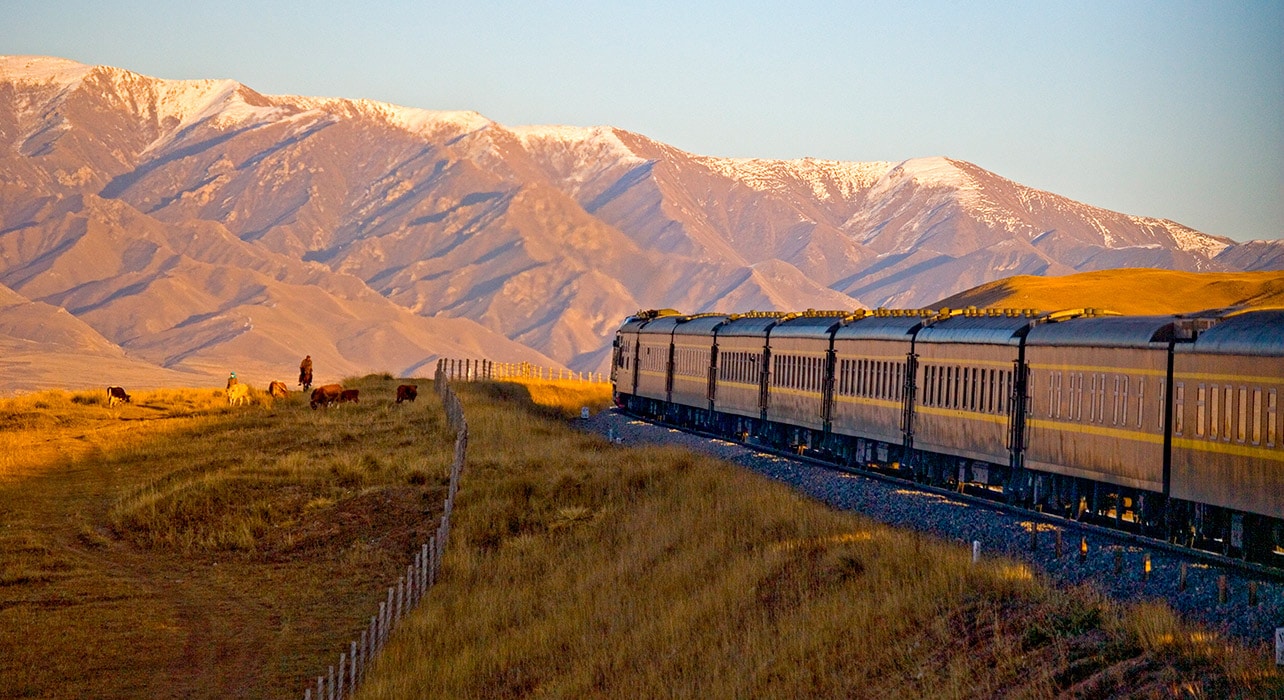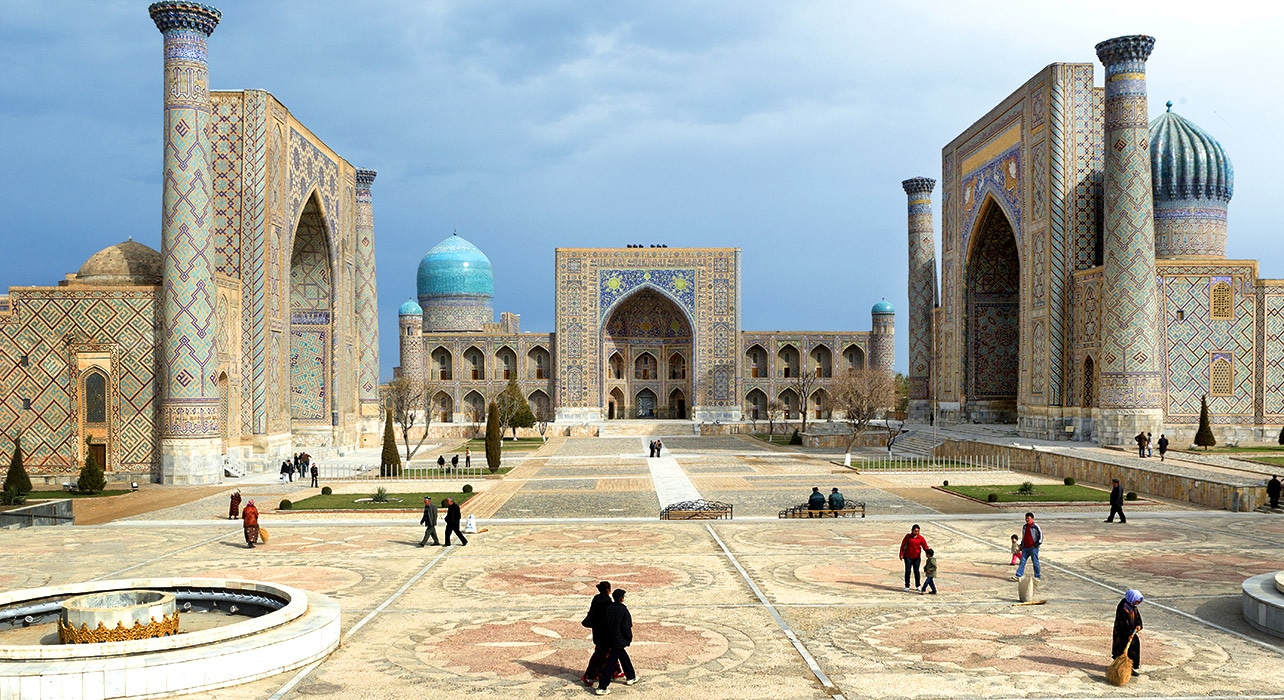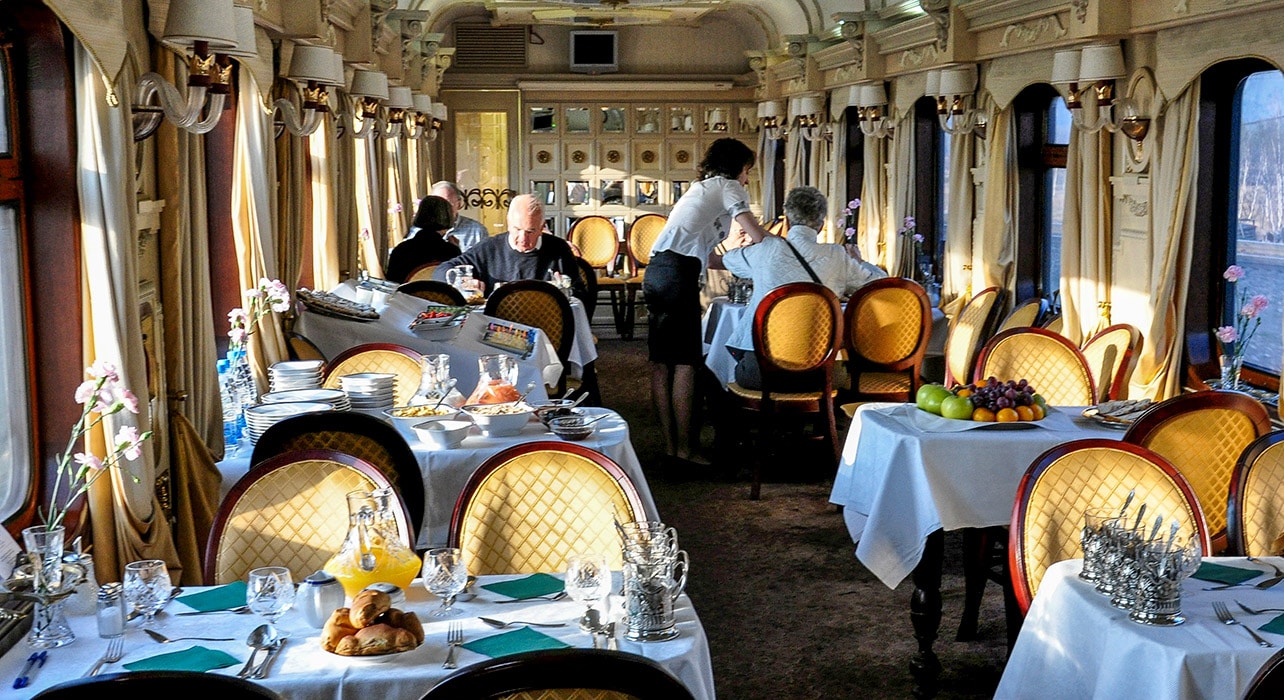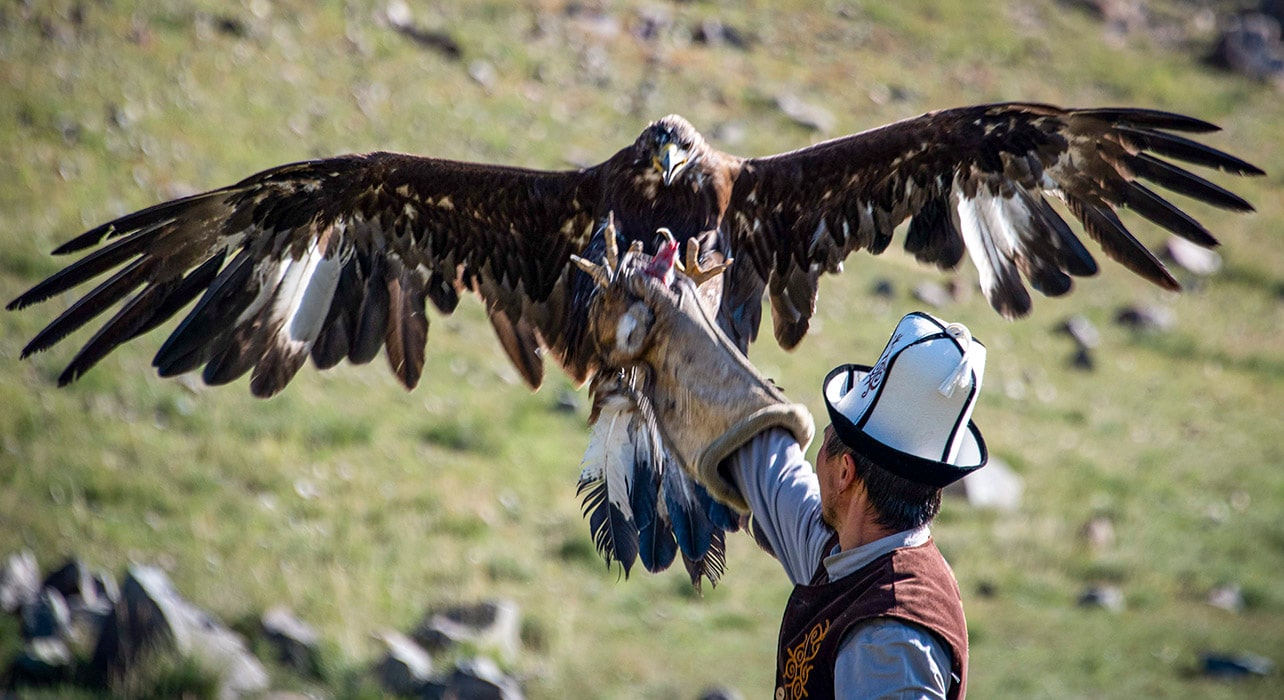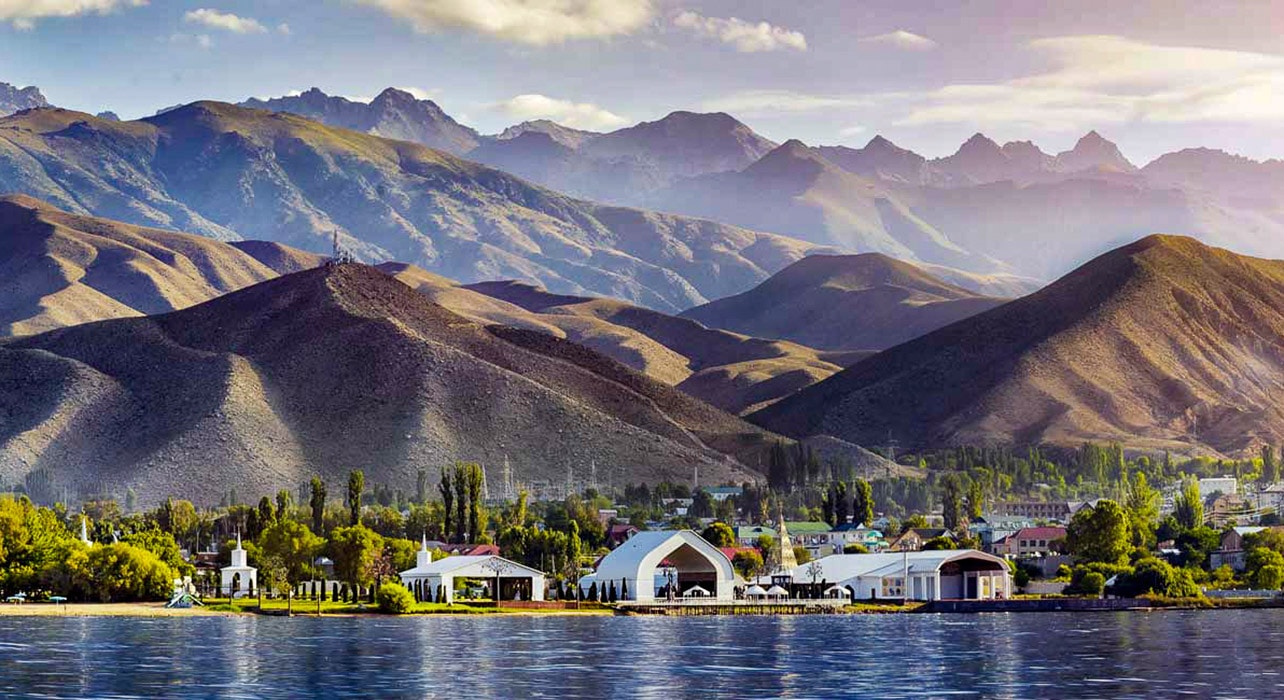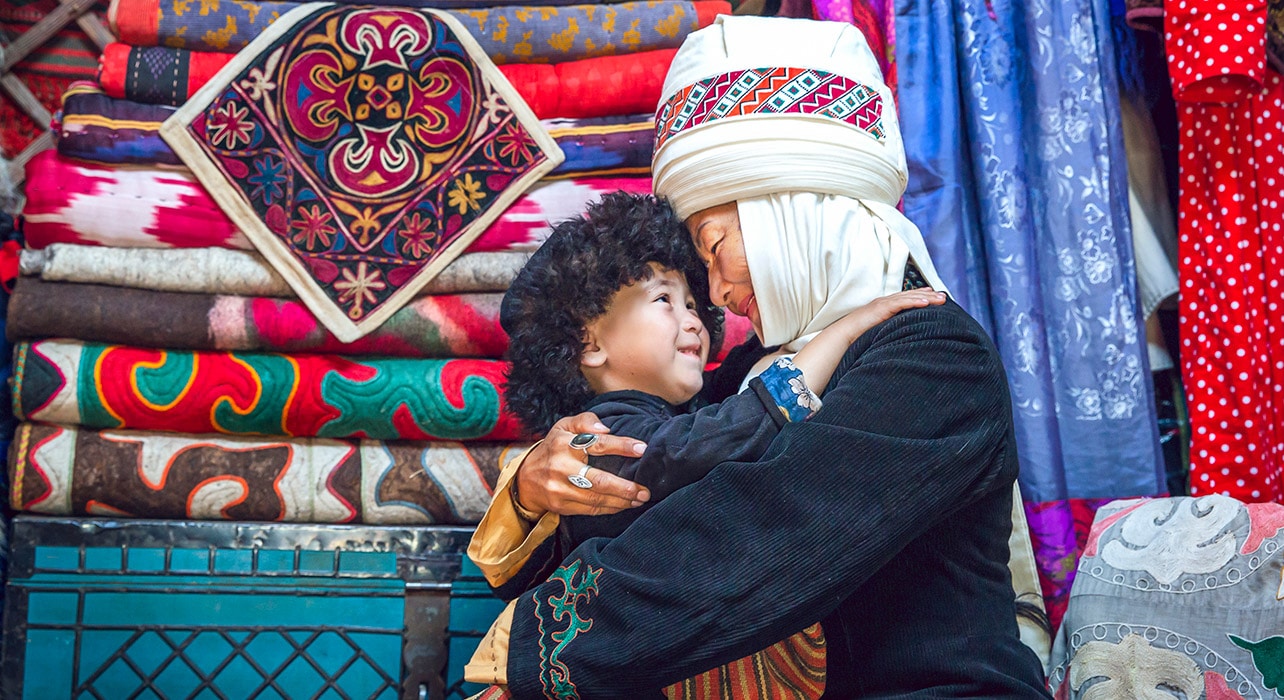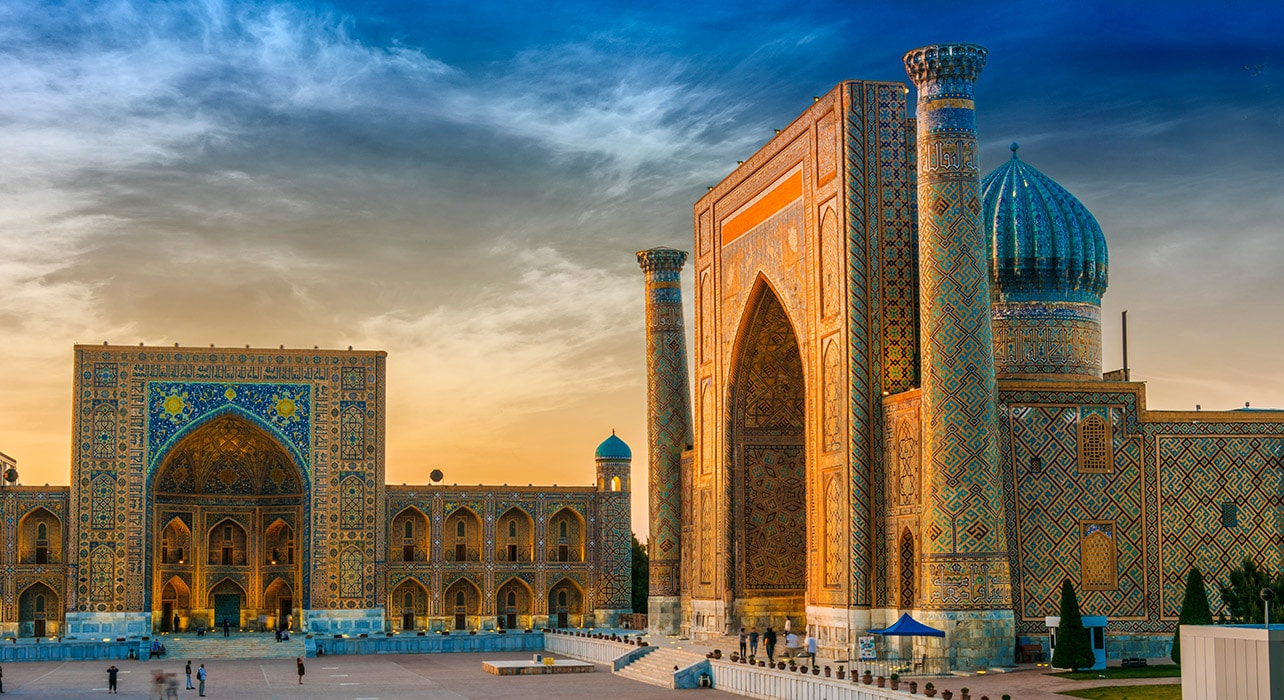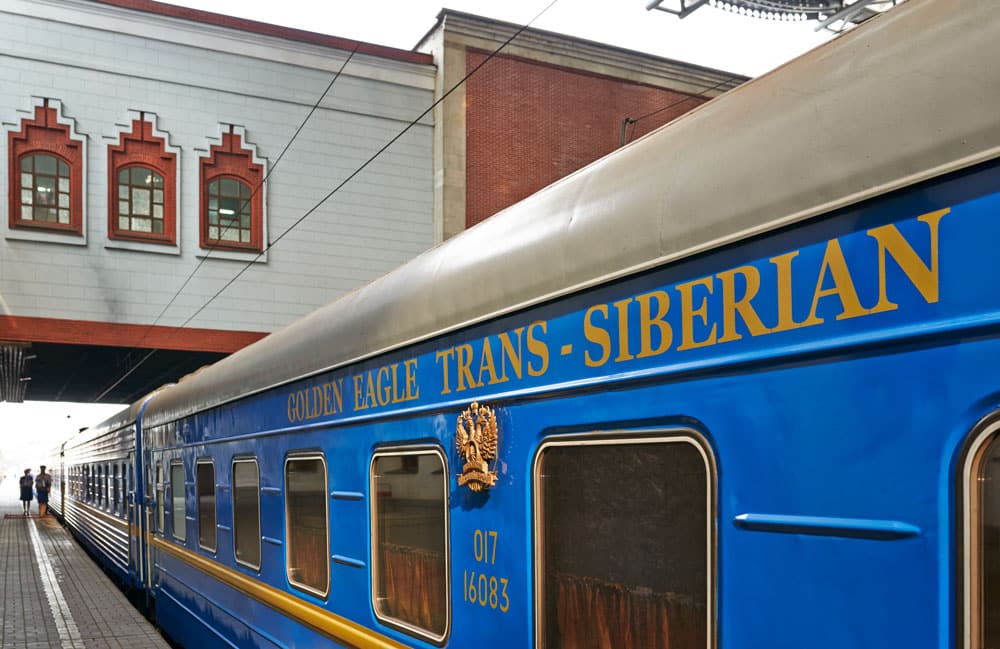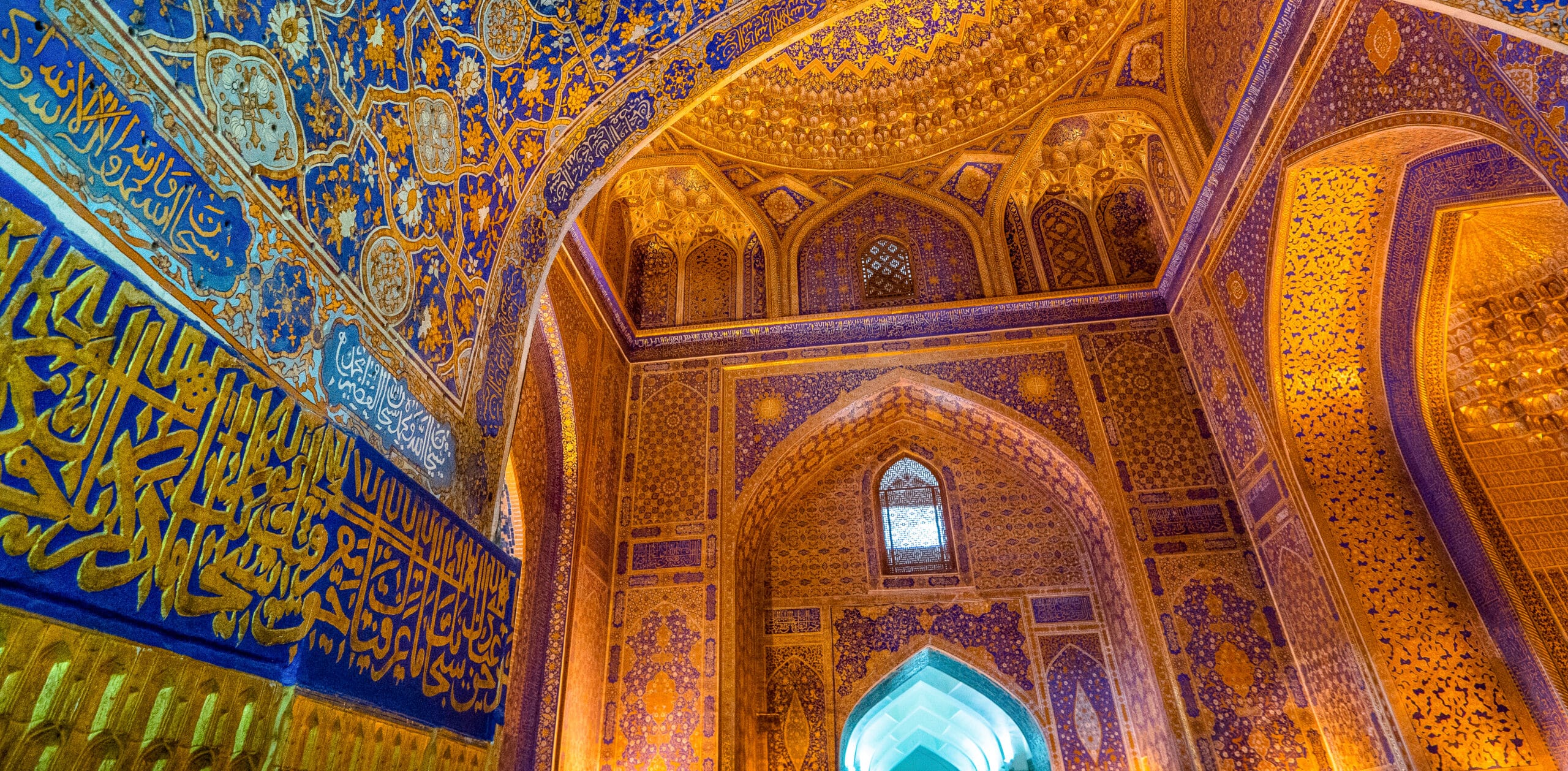
Across the "Five Stans" aboard the Golden Eagle
Republics of the Silk Road Rail Journey
Overview
The intriguing countries of Uzbekistan, Kyrgyzstan, Tajikistan, Turkmenistan, and Kazakhstan—the “Five Stans”—are located at a historic crossroads of trade, religion, language, and the arts. Aboard the private luxury train, the Golden Eagle, enjoy some of the world's most stunning monuments and fascinating modern cultures. Your journey begins in the historic Kazakhstan capital of Almaty, takes you along the great trading posts of the Silk Road including fabled Samarkand, Bukhara, and Khiva, before arriving at your final destination of Tashkent, Uzbekistan. Throughout your odyssey, savor the delights of the Golden Eagle—first-class service, sumptuous cuisine paired with fine wines, engaging lectures, and active days with informative guides. This is an extraordinary, once-in-a-lifetime adventure!
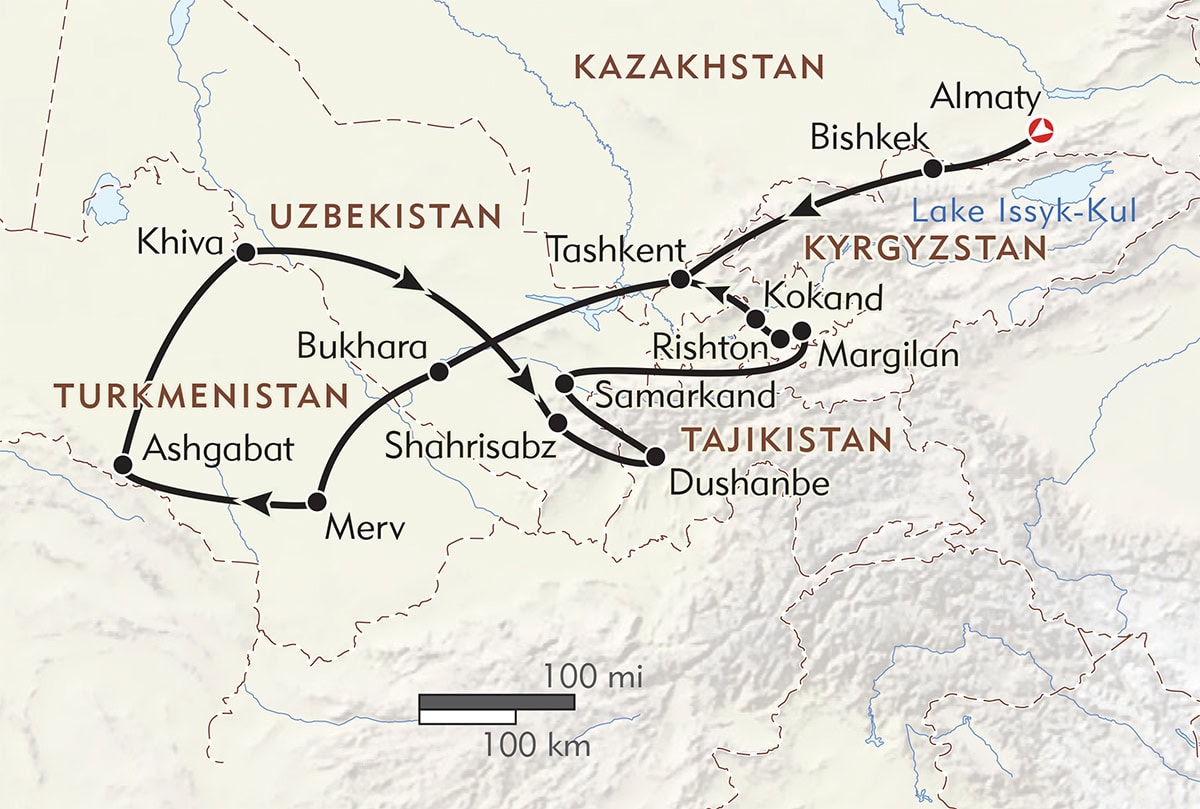

Arrive: Almaty, Kazakhstan
Depart: Tashkent, Uzbekistan
Highlights
- Discover the 4,000-year-old art of Golden Eagle hunting at Lake Issyk-Kul
- Discover the spectacular architecture of the Timurid dynasty
- See the Darvaza Burning Gas Crater light up the night sky in the Kara Kum desert
- Explore the historic, UNESCO-honored cities of Khiva, Merv, Bukhara, and Samarkand
Itinerary
Note: This trip is not exclusive to, nor operated by, Wilderness Travel, who acts solely as an agent in booking your reservation with the operator. Please download the Rate Sheet in the Dates & Pricing section to see the full pricing details and contact our Cruise Collection Specialists to check availability.
Originally a caravan rest stop serving the travelers that came through the area along the Great Silk Road, Kyrgyzstan’s capital city, Bishkek, is the location of this afternoon's sightseeing. Visit the Ala-Too Square, built in 1984 to celebrate the 60th anniversary of the Kirghiz Soviet Socialist Republic in Kyrgyzstan, and enjoy a city tour of the local parks, rich in Soviet history, including statutes of Karl Marx and Friedrich Engels and the Memorial for the Red Guards.
From Margilan, continue onto Rishtan, which is home to Uzbekistan's world-famous ceramic industry. Here you will discover the secrets of the techniques of the ancient craft from prominent local artisan Rustam Usmanov. Witness the magic of pottery in action during a close up demonstration by a master professional at work and get a behind-the-scenes look at the meticulous craftsmanship that goes into decorating these exquisite ceramics.
Kokand is one of the most ancient cities of Uzbekistan and served as a critical trading post on the Silk Road. Highlights of the tour include the majestic Palace of Khudayar Khan (the Pearl of Kokand), and the Jami Mosque, Kokand's most impressive Mosque.
This evening we enjoy our Farewell Dinner on board the Golden Eagle as we return to Tashkent.
Accommodations
Scroll through our signature accommodations for this trip below. Although it is highly unlikely, we may make substitutions when necessary.
What the Trip is Like
The trip is rated Level 1+, Easy, and is appropriate for anyone in good health who is physically active. Light walking and hiking are required to scenic nature areas, local towns, villages, and sites of historical and cultural interest.
A particular charm of the Golden Eagle is the beautifully appointed restaurant cars, a delightful venue in which to enjoy meals skillfully prepared by the Executive Chef and his on-board restaurant team using the very best ingredients locally sourced whenever possible. Depending on the number of guests on board, one or two restaurant cars will be on every departure.
Enjoy the pleasures of an on-train breakfast each morning — the wonderful aroma of freshly-baked bread permeates the dining car, a wide selection of pastries, cereals, freshly squeezed orange juice and cold plates are available from the buffet. Alternatively, enjoy a cooked breakfast brought to your table by the wait staff, all complemented by hot tea and coffee. If you are in need of a more relaxed start to the day, then opt for a continental breakfast basket with tea or coffee to enjoy at leisure in your cabin.
For lunch and dinner you will be welcomed by the on-board team and enjoy fine food, great wines and attentive service in the welcoming atmosphere of the dining car. The Golden Eagle offers a culinary experience that reflects the essence of the places you visit, as well as highly accomplished international cuisine. Vegetarian and other dietary options are also available.
During your tour, you will be personally invited to a special dining occasion, our celebrated Caviar Dinner, savoring gastronomic specialties including black sturgeon and red pacific salmon caviar.
Meals at lunch and dinner are complemented by an excellent choice of wines from around the world.
Meals are a relaxed affair as the restaurant cars can accommodate all our guests in a single sitting. Throughout the journey there is an informal dress code, and with the open-seating policy you can dine wherever, and with whomever, you please.
On a typical day, the Golden Eagle will travel through the night, as you sleep in your private cabin. Disembarking after breakfast the following morning, you will set out by coach or minibus to explore, for example, the sights and sounds of Samarkand, Mashhad, Persepolis and Tashkent, and at the end of the day return to the sanctuary of your hotel-on-wheels, greeted by your cabin attendants with complimentary refreshments.
Some days will be spent partly or entirely on board the train providing an opportunity for guests to watch the landscape unfold. The Golden Eagle offers different on-board activities and facilities so you might spend the time attending talks on the local history and culture, trying your hand at bridge, improving your photographic skills, or simply soaking up the atmosphere and enjoying afternoon tea in the Bar Lounge Car. Perhaps read a novel from the library, challenge your friends to a game of bridge or backgammon, or attend an engaging talk given by on-board lecturers on local history and culture.
During morning or afternoon tea in the Bar Lounge Car with delicious, freshly baked pastries, your Tour Manager will organize a program of activities. Passengers will receive printed daily itineraries throughout the tour detailing train arrival and departure timings, latest weather forecasts for the next destination, and information on the following day's excursions and activities. In the evening, enjoy the sounds of the resident pianist playing on the baby grand piano in the Bar Lounge Car. From time to time, there are special concerts. Every night the bar stays open until the last person leaves.
Book your trip today
Our Area Specialists know every detail about our tours. They will be happy to answer any questions and help you choose the journey that’s right for you. Contact us to learn more or book your trip today!
Itinerary
Submit the form below to download itinerary
Trip Levels
With more than 200 different adventures to choose from, we want to help you find the trip that’s right for you. Our Trip Level system ranks each trip in two ways: a number rating from 1 to 6 according to the activity, and general travel rigors. 1 is the easiest and 6+ the most difficult—see descriptions below for explanations of each number. A plus (+) sign means the trip is a bit more strenuous than other trips of that level. The detailed explanation of each trip—below the bar with the number rating—is perhaps more important, specifying activities, altitudes, hiking, and travel conditions. The Detailed Itinerary, available by download or mail, gives further information. Our Area Managers can also answer questions and guide you to the trip that best suits your interests.
Level 1 – Easiest
Non-camping journeys, optional walks, little elevation gain or loss.
Level 2 – Easy to Moderate
Hotel nights and/or safari-style camping, hikes of two to four hours on some days. Other physical activities are sometimes included, such as optional sea kayaking.
Level 3 – Moderate
Half- to full-day hikes (3-6 hours) over rolling countryside on most days, occasional steep trails. Many of our hotel-based walking tours are in this category, as are our snorkeling adventures.
- Tuscany & the Cinque Terre
- Argentina: Hikes and Estancias of Patagonia
- Palau Snorkeling & Sea Kayaking
- Some trips with minimal hiking but rugged travel conditions or long drives, such as Tribal Ghana, Togo & Benin, are Trip Level 3.
Level 4 – Moderate to Strenuous
Full-day hikes (4-6 hours), mountainous terrain, significant elevation gains and losses (hiking up or down as much as 3,000 feet) on many days. Altitudes no greater than about 10,000 feet.
Level 5 – Strenuous
Full-day hikes (4-8 hours), mountainous, steep terrain (hiking up or down as much as 3,500 feet) on many days. Trips with hiking at average altitudes of 10,000 to 12,000 feet are in this category.
Level 6 – Very Strenuous
Full-day hikes (5-8 hours), mountainous, steep terrain (hiking up or down as much as 3,500 feet) on many days. Most hikes take place at altitudes above 10,000 feet, with some days ascending as high as 18,000 feet.


